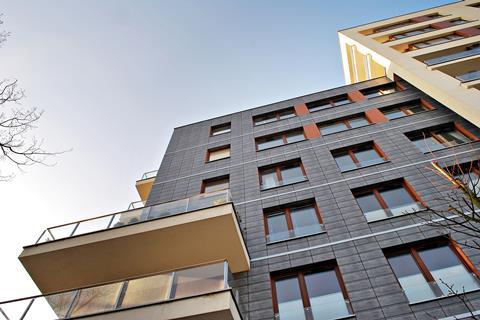It’s official: coronavirus, the black swan of 2020, is now a pandemic.

While the housing market enjoyed a brief bounce-back following the general election, it is the uncertainties produced by ‘black swans’ that can send markets into meltdown. So, with the outbreak now firmly established in the UK, it’s important we consider what the potential challenges to the operation and leasing of BTR schemes are and what countermeasures can be deployed to mitigate the impact.
The impact of containment initiatives
The leasing and operational management of new and existing schemes are likely to be immediately affected by coronavirus containment initiatives.
If ‘population distancing’ strategies come into play, it will be likely that, in the short term, demand falls significantly as people are less willing or able to travel for viewings. And in the medium term, if working-from-home policies are enforced, it is possible that onsite teams will become depleted and facilities management may suffer from resourcing and supply chain issues. Add to that the question of what to do if identified coronavirus cases are found within your building and the potential implications for your brand.
Irrespective of the fact that they may have been some months in the planning, it is highly likely that current strategies may now not be fit for purpose.
Review all strategies
However strong your marketing plans were, it is now likely you need to diversify your marketing channels to generate demand. If your strategy is heavily reliant on key sectors or demographics, like international students, large group bookings, corporate or relocation lets and short lets, it’s highly likely it may now be insufficient. Fewer people are happy to travel to viewings, many of the above groups will no longer be moving so freely from let to let and in any time of uncertainty precedent shows that people are more likely to extend their tenancies than move on.
To counter this, it is critical to look at adopting other tech-based solutions that can facilitate digital engagement across both demand creation and the customer journey. T should include:
- Investing in your ability to conduct video viewings or virtual reality walk-throughs
- An end-to-end digital process for tenancy application (except Right to Rent)
- Using cross-channel digital communication methods (WhatsApp, WeChat etc)

Review your marketing plan. Even a well-developed and well-costed plan will see your costs to acquire customers increasing. Review your plans to focus on return on investment (ROI) to minimise the impact in the short to medium term, considering the following:
- Tube/bus traffic is likely to reduce significantly, so with an already heavy outlay and difficult-to-quantify ROI, costs can be saved by reducing spend on above-the-line strategies
- Traditional digital strategies will increase in cost substantially as the space becomes more crowded and:
- more players compete for traffic as other channels close down
- traffic sources become less differentiated, eg all inbounds from the UK
- renters are exposed to double the number of advertisements leading to lower conversions
- Adopt an innovative, broad cross-channel below-the-line strategy monitoring ROI closely to maximise spend effectively with a clear customer acquisition cost. Bring in experts if needed to help sustain demand and avoid spiralling, ineffective spend
- And while arguable a last resort, it will be important to monitor the pricing in the market, and it may be necessary to review pricing in the short term
Go above and beyond to protect your renters and your brand
Proactive and reactive strategies should be put in place to demonstrate how you will support your staff and residents to prevent an outbreak in the building and deal with an outbreak should it happen. Consider the following:
- Increase cleaning measures – conduct a daily deep clean/sanitisation of all communal areas (lifts, staircases, intercoms etc)
- Install hand sanitisers throughout the building
- Review community events schedule – consider the closure of communal spaces and/or postponement of communal events
- Create a contingency plan for parcel delivery/collection
- Provide masks to staff
- Provide information flyers and/or digital content in multiple languages to reassure staff and explain procedures to try to prevent an outbreak in the building
- Engage with local health authorities to understand testing procedures to make sure you’re following protocol
Should you have any confirmed cases within the building:
- Provide information flyers and/or digital content in multiple languages to reassure staff and explain procedures
- Plan for how to care for any self-isolating or confirmed cases within your communities:
○ Food deliveries from the lobby to the apartment itself
○ Daily contact – keep up communications and check-in. Consider promoting digital engagement via video games, assign buddies or cooking rotas etc
○ Consider offering free movie subscriptions
Don’t ignore the potential pressure on your resourcing and supply chains:
- Get ahead of any maintenance issues by checking where you currently source parts and products and creating contingency plans for if you can no longer get these – think about the lift, cleaning products, electricity etc
- The building infrastructure is likely to struggle should all residents stay in so make a plan around broadband and electricity supply among other things
- Consider white-label or increasing telephone support for your residents also, as if staff numbers are reduced you still need to maintain standards
While times of crisis are never easy to navigate, they do provide an opportunity to look at new ways to grow market share and end up emphasising your brand values and building stronger communities. In the short term, while the rental market will likely shrink, it will probably be followed by an influx as confidence returns, travel restrictions are lifted and renters once again look to find new homes. This will pass.
Jo Green is head of business development at Home Made






























No comments yet